SUMMARY
This is AI generated summarization, which may have errors. For context, always refer to the full article.
![[ANALYSIS] The rise of Meta-partisan ‘news’ ecosystems on YouTube](https://www.rappler.com/tachyon/2022/04/analysis-meta-partisan-youtube.jpg)
“The rise of Meta-partisan ‘news’ ecosystems on YouTube” is a study presented by authors from the Philippine Media Monitoring Laboratory (PMM) in the sixth #FactsFirstPH research briefing held on April 13, 2022. The full copy of the research is reposted with permission.
In the post-truth era, news matters more than ever. But what counts as “news” has become a contentious subject.
Scholars from Journalism Studies and Online Participatory Journalism have examined the changing news production conventions in online news, emphasizing their departure from traditional news values and adoption of participatory journalism. As political polarization intensifies globally, hyperpartisan news normalizes extreme political bias and transgressive reporting styles in media institutions.
“Fake news” as a popular form of disinformation also invokes the genre to propagate false, fabricated or manipulative information in the “look and feel of real news.” These developments shape audiences’ preconceived notions of “newsness” and consequently, the role of news media in discourse and democracy.
The precarity of the news genre is exacerbated by the “secondary gatekeeping” of users, platforms, and algorithms. This confluence of human-machine interactions determines what news stories reach which audiences, appear in a particular position in the feed, and are recommended with other content, thereby affecting the visibility, circulation, and impact of news on public life.
In this paper, we investigate a distinct breed of “news” that infuses online news genres, hyperpartisanship and disinformation on YouTube during the 2022 Philippine Elections. We examine how the YouTube channels that produce this kind of “news” function to overexpose audiences to partisan content through a mass, coordinated network fortified by the platform’s recommendation system.
In other words, these YouTube channels make “news” about themselves – their politicians, their political agenda, and their political schemes – until they create a coherent political reality that can both withstand and co-exist with mainstream news media.
Methodology
From an initial corpus of over 20,000 videos from May 2021 to February 2022 which contained or are related to election keywords, we filtered the channels and videos based on the recurring presence of keywords such as “news,” “balita” or similar expression, excluding those that are considered mainstream news outlets (e.g., ABS-CBN, CNN Philippines).
We used social network analysis to map the identified “news” channels with the rest of the channels in the 2022 YouTube Election recommendation network. Through the network visualization tool Gephi, we performed cluster analysis and determined the communities to which these news channels belong.
We also performed discourse analysis to understand not only the content but also the social contexts wherein they reside. We sampled the top 24 videos of recurring channels, and we examined the presence of news values (e.g., eliteness, impact, superlativeness) and employment of news styles (i.e., discursive, substantive, audio-visual, and textual styles) in the videos. Then, we analyzed how the news elements shape the manipulative discourses embedded in the content, with a focus on fabricated information, biased framing, change of focus, polarized ideologies, and platform manipulation.
Network of news “fronts”
We identified 124 out of 3453 channels that employ news elements in their video titles. When mapped into the 2022 Elections network, Figure 1 illustrates that these channels (teal) are prominently positioned and densely connected to one another even if they comprise only 4% of the network.
This indicates the high “relatedness” in their topics, formats, and audiences, as determined by the YouTube recommendation system. It also means that they are most likely recommended next to each other, forming the backbone of the meta-partisan “news” ecosystem.

When partitioned in algorithmic communities, Figure 2 locates these “news” channels (labeled) mostly in one major community (orange) together with religious organization-owned media SMNI News, government owned media PTV, official Bongbong Marcos channel, and channels of known allies such as Toni Gonzaga Studio and Erwin Tulfo.
A number of channels also spill over neighboring communities of mainstream news media (blue) and Marcos Jr. partisan influencer and content creator (green) channels, as previously reported here. Their close proximity to these adjacent communities allows them to function as a surrogate to journalistic reporting or a complement to politically charged content.
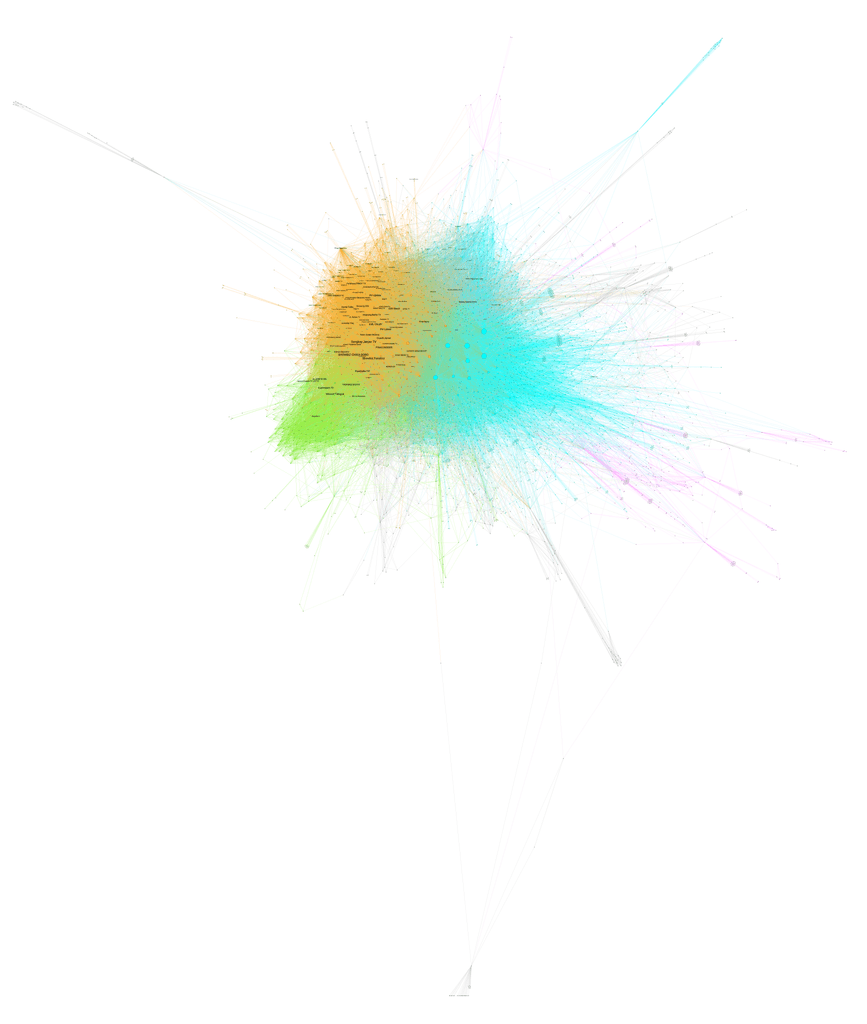
Constructing “Newsworthiness”
The use of news values serves as a gateway to the meta-partisan “news” ecosystem by projecting that the manipulative content contains information and commentaries that are of public relevance.
First, the news values inscribed in the videos manufacture “relevance” by serving as “journalistic extensions.” What this means is that these “news” channels extend, expand, and expound on topics that are already talked about in mainstream media, often centering on elite actors and public events, in ways that are not necessarily of public interest but are politically provocative or beneficial to them.
For instance, a Duterte News Report video about the disqualification case against Marcos Jr. emphasizes his running mate Sara Duterte’s comment that insinuates that the case was concocted by their political rivals. The voice-over says: “Nanindigan din si Sara na walang basehan ang lahat ng disqualification cases laban kay Marcos na ayon sa kanya ay kagagawan ng mga taong desperadong makabalik sa kapangyarihan.”
The inclusion of this political issue was used to pull in viewers due to the “importance” of the matter, but the video primarily served as a platform to deny its merits and condemn the opposition.
Another way that the channels manifest “relevance” is through reposting and curating published content from mainstream news outlets, partisan news sources, and social media posts, and editing them to advance their political agenda.
This upcycling of content, combined with the producers’ own content, which in most cases are additional commentary, result in the extensions of journalistic extensions. These are partisan content found in other partisan channels within the network that fortify the meta-partisan “news” ecosystem, such as IDOL CALOY reposting influencer Banat By’s commentary and Showbiz Fanaticz placing edited the footage of vlogger Thinking Pinoy in its video.
Second, news values produce “affective” content to elicit emotional responses from audiences. Affect, through our emotions, can shape our thinking, decision-making, and corresponding actions and reactions towards the content we see online.
More than employing superlativeness using titles such as “SHOCKING BREAKING NEWS,” affect enables movement or force to make a story resonate with viewers. One such tactic used to move audiences’ emotions is by dramatizing narratives and claiming to represent the public opinion. In one Showbiz Fanaticz video, an unknown voice-over comments on the supposed “Makabagbag-damdamin na pahayag ni dating senador Bongbong Marcos na hinangaan ng maraming netizens matapos ang naging one-on-one talk with Boy Abunda.”
Lastly, news values perform “newsworthiness” not only to the audience but also to the platform. Platforms like YouTube value popularity and engagement and reward content that generates significant likes, shares, and comments with visibility and prestige through search and recommendation rankings.
By using keywords, tags and hashtags in YouTube’s embedded video formats and descriptions, as well as consistently uploading timely content during pivotal events of the election season such as debates, channels within the meta-partisan “news” ecosystem leverage the logics of the YouTube recommendation system. A PH Latest video takes this even further by livestreaming and showing live comments and reactions, while its description contains hashtags which are unrelated to the video in order to gain more traction.
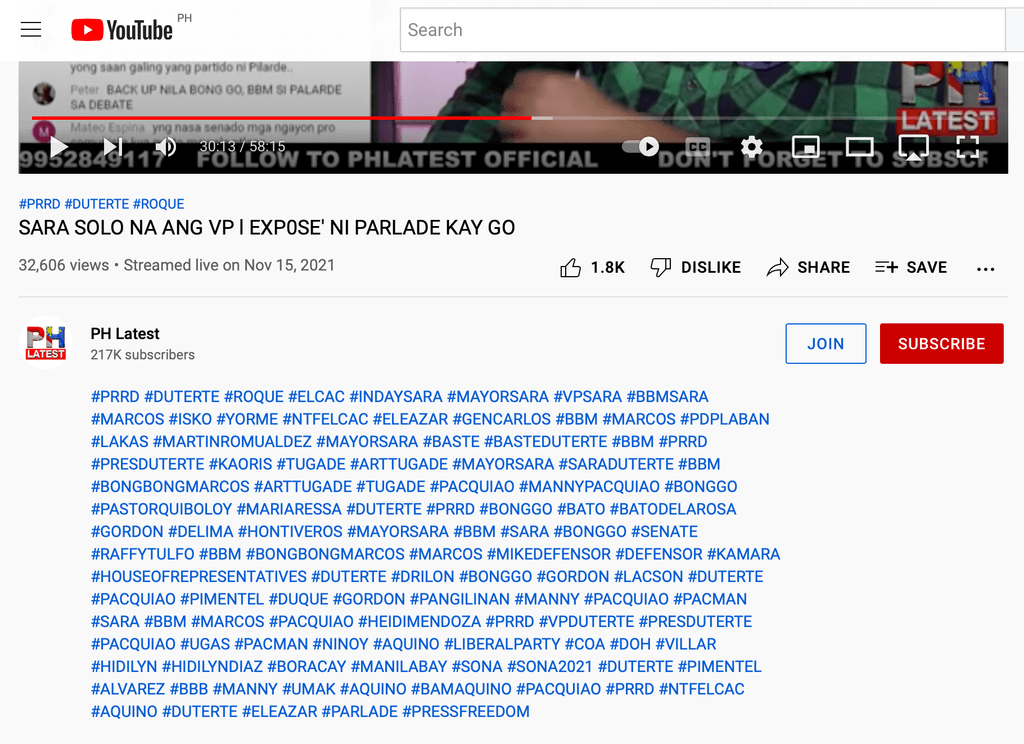
News in style, propaganda in substance
The appropriation of news styles functions as a legitimization tool to position the “news” channels as “alternative” sources of news and information on matters concerning Philippine elections. By packaging themselves as “news” without necessarily delivering news, they are able to manipulate audiences to perceive their content as a product of journalistic practice and prescribe a partisan interpretation of political events.
The videos’ news styles primarily invoke journalistic authority using audio-visual and textual cues that are traditionally associated with broadcast news media. These audio-visual cues include the use of a broadcast character generator, news crawler, and reporter voice-over, which are conventionally used to denote the significance, impact, and timeliness of news stories.

However, the channels’ use of textual cues perverted journalistic conventions of accuracy, fairness, and professionalism. The videos’ superimposed headlines are marked with biased framing, vulgarity, and incoherence.
For instance, in one of the videos under the Duterte News Report channel, the headline contains expletives against VP Leni Robredo, which reads “Kilalang Direktor, Sinupalpal si Robredo, Palpak kang Bruha ka Lugaw.” In addition, the use of temporal markers such as “Live News” and “Breaking News” do not correspond to its intended meaning. The video of SHOWBIZ CHIKA-DORO’s that is labeled “Live News” is not a live coverage but an edited video with additional clips elsewhere. “Breaking News” is also utilized in almost all channels with content that do not depict immediacy and impact.
In the absence of substantive reporting, the “news” channels use footage and excerpts as proxy evidence from SMNI, from government media channels like Presidential Communications Operations Office and RTVMalacañang, and from mainstream news media like GMA News and CNN Philippines. SMNI was the preferred source for many of the channels, claiming that SMNI has “no bias” despite the overt partisan allegiance of its owner, commentators, and guests in the reposted shows.
Apart from cherry picking politically favorable details from their reporting, the channels often use mainstream news media footage to ridicule and discredit the outlets. In one video, excerpts from CNN Philippines’ Presidential Debate were used to downplay its integrity and mock Marcos Jr.’s opponents. The host quips, “Hindi po nila tayo mapipigilan mga kababayan na magkomento diyan sa debate kuno na iyan, debate ba iyan o maritesan lang?”.
Some video clips were also manipulated to make it appear that the content was from somewhere else. For instance, Duterte News Report lifted a newscast from CNN Philippines and overlays it with the text “news.ph,” which misrepresents its source material.

A closer look into the discursive styles of the channels revealed patterns that contain extreme bias and fabricated information, without regard for journalistic standards of accountability, objectivity, and neutrality. Falsehoods were repeatedly used in the content, such as ABS-CBN’s failure to pay their taxes and Robredo’s being the presidential candidate for the Liberal Party.
Persistent misrepresentation of the speech and actions of political candidates were also salient in the videos. For instance, an unknown voice-over suggests that “Dalawang tao lang ang pinagdududuhan ng tao na manghihingi ng advance questions, ito ay sina Senator Pacquiao at VP Robredo”, despite no evidence supporting such.
Blueprint of manipulation
When legitimized as “news,” these channels employ manipulation strategies that crystallize the political propaganda and disinformation. Not only are they advancing manipulative discourse, but they are prescribing a partisan lens of interpreting political events and issues that makes viewers susceptible to dismissing evidence, evading logic, or rationalizing misconduct.
One key strategy is the invocation of the moral ascendancy of the politicians and their political agenda. The videos allege the political actions and decisions of their endorsed political actors as politically “just” and are based on genuine intent, moral judgment, and careful consideration.
For instance, SHOWBIZ CHIKA-DORO features blogger Sass Sasot who justifies Sara Duterte’s decision to run as VP and not as president, claiming that “[Sara] wants to learn, get more adept at being a leader… build her own political kingdom and not simply inherit it from her father” instead of it being a calculated political scheme.
In the process of elevating the politicians’ moral stature, the videos also frame political competition and opposition as morally corrupt. BANAT BALITA showcases SMNI commentator Mike Abe who asks “Tawagin n’yong magnanakaw si BBM, bakit? May ebidensya ba kayo? Tapos sasabihin nyo, karapatan nyong ilabas ang saloobin nyo?” and calls out people for their alleged malicious accusations against Marcos Jr.
This purported “moral” character and justifications of politicians have become a mechanism to rationalize falsehood and factual distortions in the face of well-documented evidence and overt politicking.
Also ubiquitous in these videos is the vilification of “enemies” who are embodied by opposing political actors, mainstream news and political institutions, and activist groups. These “enemies” are discredited, maligned, and assigned fault, at the alleged expense of either the endorsed politicians or the public.
News outlets are constantly accused of “bias” and are purportedly against “anything good for the country.” In AKO PINOY’s video, influencer “Banat By” accuses survey firms of purposely releasing survey results that report Rodrigo Duterte’s decline in voter preference as VP, claiming that “Merong nag papamind condition na si Pangulong Duterte, wag tumakbong VP.”
Political opponents also are frequently berated by calling them “bobo,” “walang laman ang utak” and “dinadaan sa emosyon” for their supposed incompetence and spitefulness. For instance, the unknown host in PH Latest undermines the accomplishments of VP Robredo by asking, “Ang dami niyo na palang nagawa, bakit hindi bilib ang tao?” in reference to her polling performance.
By framing these actors and institutions as enemies not only of particular politicians but also of the public, the channels can dismiss the former’s truth claims as ill-intent and borne out of their ineptitude, while helping the “hero” politicians maneuver and deflect legitimate criticisms and allegations.
What makes disinformation ultimately potent is the promise of political enlightenment. These videos make the public believe that they are victims of a political system and that these alternative “news” channels can help them know the “truth.”
The videos first establish the “conspiracy,” such as the claims of deceit or “mapanlinlang na 1986 EDSA revolution” by the unknown voice-over purportedly echoing comments of political scientist Clarita Carlos. Then they start to deny and distort facts, including the supposedly false claims of the Marcoses’ ill-gotten wealth “dahil napagdidismiss ung mga kaso” and “ung mga sinasabi nilang Martial Law victims, eh wala naman.”
These channels convince viewers that by subscribing to the narratives of the video, they are able to “open their eyes” (“namulat“) to the truth. Social media was said to be crucial for people to know the “truth” (“nalalaman ang katotohanan“) against purported propaganda in books and in schools. There is also further invitation to viewers to subscribe to their channels and similar accounts and personalities who are or can be aligned with their political agenda.
For example, Showbiz Fanaticz invites people to watch Marcos Jr.’s interview with Boy Abunda for “milyung milyung Pilipino ay nagpapasalamat kay Boy Abunda… nakapagbukas ng isipan ng maraming mamamayan kung sino ang dapat iboto.”
Traversing the meta-partisan “news” ecosystem
The “news” channels we investigated infuse the connective capacity of the algorithms and the institutional credibility of news in manufacturing propaganda and disinformation in ways that construct a highly partisan political world. What makes them distinct is not their engagement in manipulation per se, but the reliance of their false and perverted claims on the lies, fabrications and omissions of other politically-aligned personalities, state apparatuses and online accounts.
This meta-partisan “news” ecosystem is self-reliant because it creates its own untruths and controversies, as well as self-sustaining for it augments, extends, and magnifies these same narratives into new ones. Once one of these claims becomes immune to fact-checking, empirical evidence, and logical explanations, it becomes the foundation from which the rest can stand and withstand scrutiny.
The news values serve as an entry point to the ecosystem by manufacturing the “newsworthiness” that call viewers to consume information that directly or indirectly affects their public life, even if the video contains little to none that would be of public interest.
The proliferation of videos portraying hyper-partisan and inflammatory topics as “newsworthy” is normalizing the perception that these stories warrant public attention in the form of views, likes and comments and thus, sending signals to the platform algorithms to privilege such content in its recommendations.
Once inside the ecosystem by clicking on a partisan “news” video, it is the aesthetic and discursive news styles that lend the content the legitimacy and, in its reappropriated form, the authenticity to engage and captivate users. It draws from the credibility and expertise of journalistic practice to achieve a semblance of it, without the accountability that media practitioners exercise.
By remaining to “amateur” but borrowing from “professional” visual, aural, and performative codes, these “news” channels occupy an inviting middle ground, especially among audiences who have developed ambivalence or skepticism of mainstream media.
The ecosystem’s core component is in its manipulative discourse, functioning as a schematic anchor from which to interpret, evaluate and respond to political messages and actions. The “news” channels as recommended next to each other are cultivating a hyper-partisan political worldview that categorically rejects particular factual information and those that uphold its integrity (e.g., mainstream media, historians, researchers) and perpetuate falsehoods of their own creation as ground truth.
The meta-partisan “news” ecosystem stabilizes this political reality such that no amount of fact-checking can unravel the convoluted lie built through its multitude of manipulative scaffoldings.
Through the concept of the meta-partisan “news” ecosystem, we shift our interest from “fact-checking” to “ecosystem tracing” to materialize the orchestrated manipulation of public discourse not only by debunking individual lie after another but by exposing the schematics of manipulation that operate the disinformation machinery.
Conclusion
The extent of our empirical investigation does not confirm nor deny that these “news” videos are considered “news” but we are making the point about the increasingly nebulous definitions of “news” in contemporary media environments.
Amidst the decline in media trust, pervasiveness of creator culture and the emphasis on the autonomy of users in choosing their sources of political information, actors with vested political interests exploit the gray areas to manufacture their own partisan “news” content to counter fair and free democratic discourse.
The meta-partisan “news” ecosystem is a product of years of economic investment, political schemes, and platform manipulation, as well as the consequence of right-wing populist politics, fence-sitting media organizations, and futile platform moderation policies. This means that dismantling this complex architecture requires incapacitating its drivers and enablers – from the unscrupulous politicians and allies, the millions of investments in these activities, the complicit social media platforms, and to the organized disinformation industry that operate the ecosystem.
It is high time to shed light on their dirty work – now that’s newsworthy. – Rappler.com
Fatima Gaw, MDCC is an Assistant Professor at the UP Department of Communication Research and the co-convenor of the Philippine Media Monitoring Laboratory. Her work centers on the mediation of platforms, algorithms, and digital technologies in culture and politics in the Philippines and in Southeast Asia. She has a Master’s degree in Digital Communication and Culture from the University of Sydney and a Bachelor’s degree in Broadcast Communication, Magna cum laude, from the University of the Philippines.
Ira Y. Cruz is a MA Communication graduate student at the UP Department of Communication Research. Aside from being a master’s student, she is also a civil servant, researcher, and development worker doing community work in fishing communities. Her research interests include science communication, development communication, and media technology and culture.
Luisa C. Pineda, MSc is a Research Assistant at the Philippine Media Monitoring Laboratory of the UP Department of Communication Research. She recently graduated from the London School of Economics and Political Science with a degree in Media, Communication and Development. Her research interests include media and disinformation, labor and migration, gender, and climate justice.
Add a comment
How does this make you feel?
![[Be The Good] Weave your story into the state of the nation](https://www.rappler.com/tachyon/2024/07/newsletter-marcos-sona-july-17-2024.jpg?resize=257%2C257&crop=275px%2C0px%2C720px%2C720px)

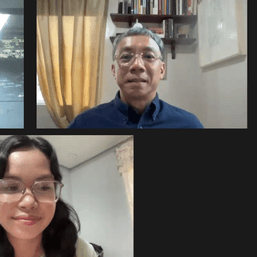
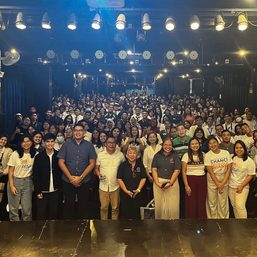
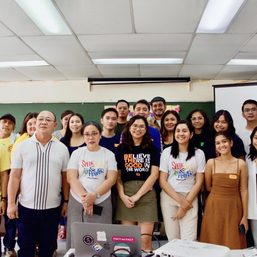
![[DECODED] The Philippines and Brazil have a lot in common. Online toxicity is one.](https://www.rappler.com/tachyon/2024/07/misogyny-tech-carousel-revised-decoded-july-2024.jpg?resize=257%2C257&crop_strategy=attention)









There are no comments yet. Add your comment to start the conversation.